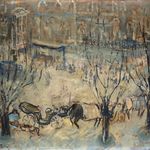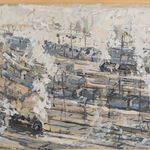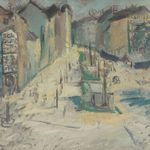ZORAN MUŠIČ, IMAGES OF MARIBOR
UGM | Maribor Art Gallery, Strossmayerjeva 6Amongst other places internationally acclaimed artists Zoran Mušič spent his youth in Maribor. In one of the interviews he said: ‘From my early childhood we always moved from one place to another. My father was a headmaster from Goriška Brda and due to his profession we had to move often, first to Carinthia (Koroška) then to Styria (Štajerska) and Maribor where I graduated. I have travelled my whole life and never developed or experienced a feeling of home or homesickness. I’m just a human born on the frontier and influenced by different cultures: Oriental, Slovene and Western-Roman.” Alongside his very relaxed attitude to the places where he lived, Mušič developed a peculiar relationship towards his creative beginnings – he called his period before Venice a period ‘without particularity’. On the other hand Milček Komelj wrote that in order to learn exhaustively about Mušič’s work one has to consider also his so-called ‘Slovene paintings’ made before World War II. In his numerous series, from beloved Dalmatian ponies to expressive scenes from Dachau and all the way to his last portraits, where his art is ‘enhanced to a consecrated approach towards the essence’ (M.Komelj), Mušič obsessively searched for the ‘ultimate essence of reality’ (Z. Mušič). His work kept by the Maribor Art Gallery presents this reality in his attempts to get away from mimicry and his search for a new language of painting. Year by year Mušič’s art altered from realistic Maribor building facades to dreamy Venice ‘vedutes’. If we compare Mušič’s opus with his life path later on, it becomes clear that his work created in Maribor is perhaps of no great significance; however it represents his sincere declarations about painting certain innermost landscapes after experiencing and processing them personally and entirely. The entire collection shows us how intolerable it would be to classify Mušič’s pre-war work as insignificant: ‘All the things which didn’t seem important, which didn’t influence on my work, fade by themselves’ (Z. Mušič). Although the painter saw this pre-war work only as his first steps into the world of art and in his creative solitude he seemed to forget about their significance, the observer of his opus is obliged to regard these first heavy footsteps left by the artist.


